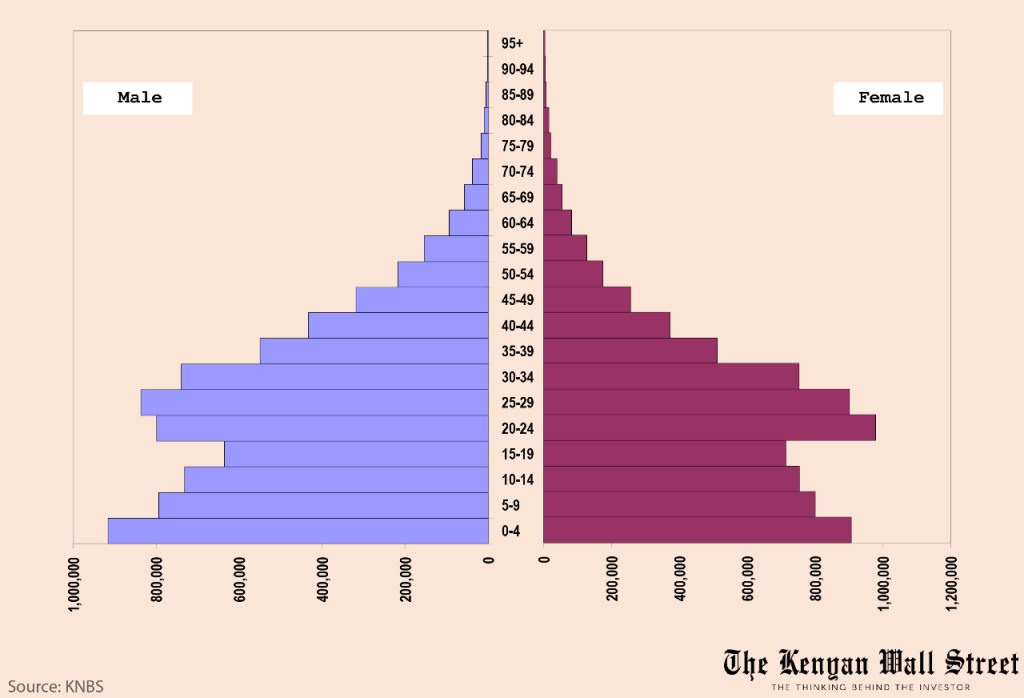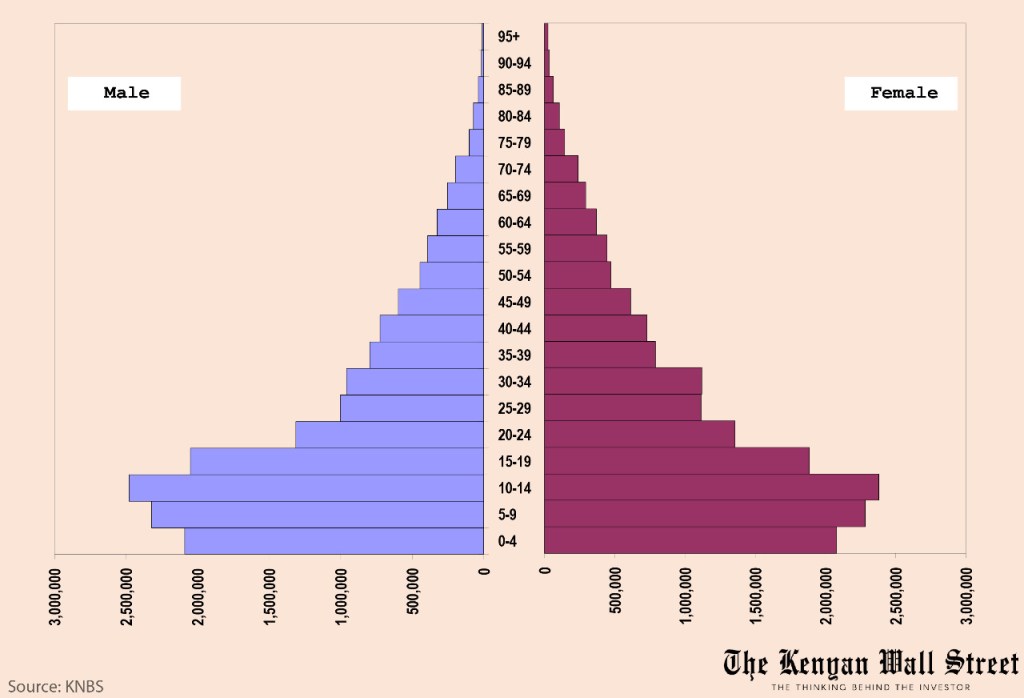Kenya has a youthful rural population; the latest data from the census 2019 by the Kenya National Bureau of Statistics (KNBS) reveals. In this case, 35.7 million Kenyans (75.1%) are below 35 years, while 32.73 million (68.9%) live in rural areas.
KNBS data shows that the population grew by 26% from 37.7 million in 2009 to 47.6 million in 2019, translating into an additional 9.9 million people.
Kenya has a population of 47.6 million people, of which 23.548 million are male, while 24.014 million are females. Further, there are 12 million households with a population density of 82 per square kilometer.

Rural and urban areas
The total urban population makes up 31.1% of Kenyans, totaling 14.83 million. Nairobi city ranks highest in urban population with 4.397 million, Mombasa 1.208 million, Nakuru 570,674 ,Kisumu 440,891 ,and Eldoret 475,716.
Interestingly, the population pyramid for urban areas indicates that the majority of the population is concentrated between ages 20 and 34 among both sexes.

Furthermore, the data reveals the growth of satellite towns around Nairobi – Ruiru 490,120, 0ngata Rongai 172,569, Juja 156,041, and Kitengela 154,436.
On the other hand, the rural population comprises 32,732, 596 making up 68.9% of the population. The population pyramid for rural areas shows a wide base concentrated among population aged below 15 years.

The largest 5-year age group is 10-14, with 6.346 million, followed by 5-9 with 6.202 million.
Socio-economic characteristics
The census 2019 data shows that 10 million people were attending primary school; 3.4 million were attending secondary school; 3.3 million were attending pre-primary school; about 500,000 attending middle-level college, while 471,000 are attending university education.
The results show that the economically active population was 22.3 million, comprising the working (19.7 million) and those seeking work (2.6 million).
The conventional population of youth aged 18 to 34 was 13.7 million, out of which 61% were working while 1.6 million were seeking work or indicated that there was no work available. This implies youth unemployment stands at 39%.
Homeownership stood at 61.3%, while 38.7% of the population reports occupying rented/provided dwelling units. The majority (93.9%) of the owned dwelling units were constructed, 3.3% were inherited, and 2.8% were purchased.
Moreover, KNBS reveals that more than a third (34.2%) of households in the country had access to piped drinking water, 51.2% use covered pit latrine as a sanitation facility.
55.1% of Kenyans use firewood as cooking fuel with LPG accounting for 23.9%, while 50.4% reported using electricity as the main source of lighting followed by solar (19.3%).
6.4 million households till a paltry 17.5% of the total land area in the country (10.3 million Hectares), with 5.6 million households growing crops as 369,679 practice irrigation.
See Also:




